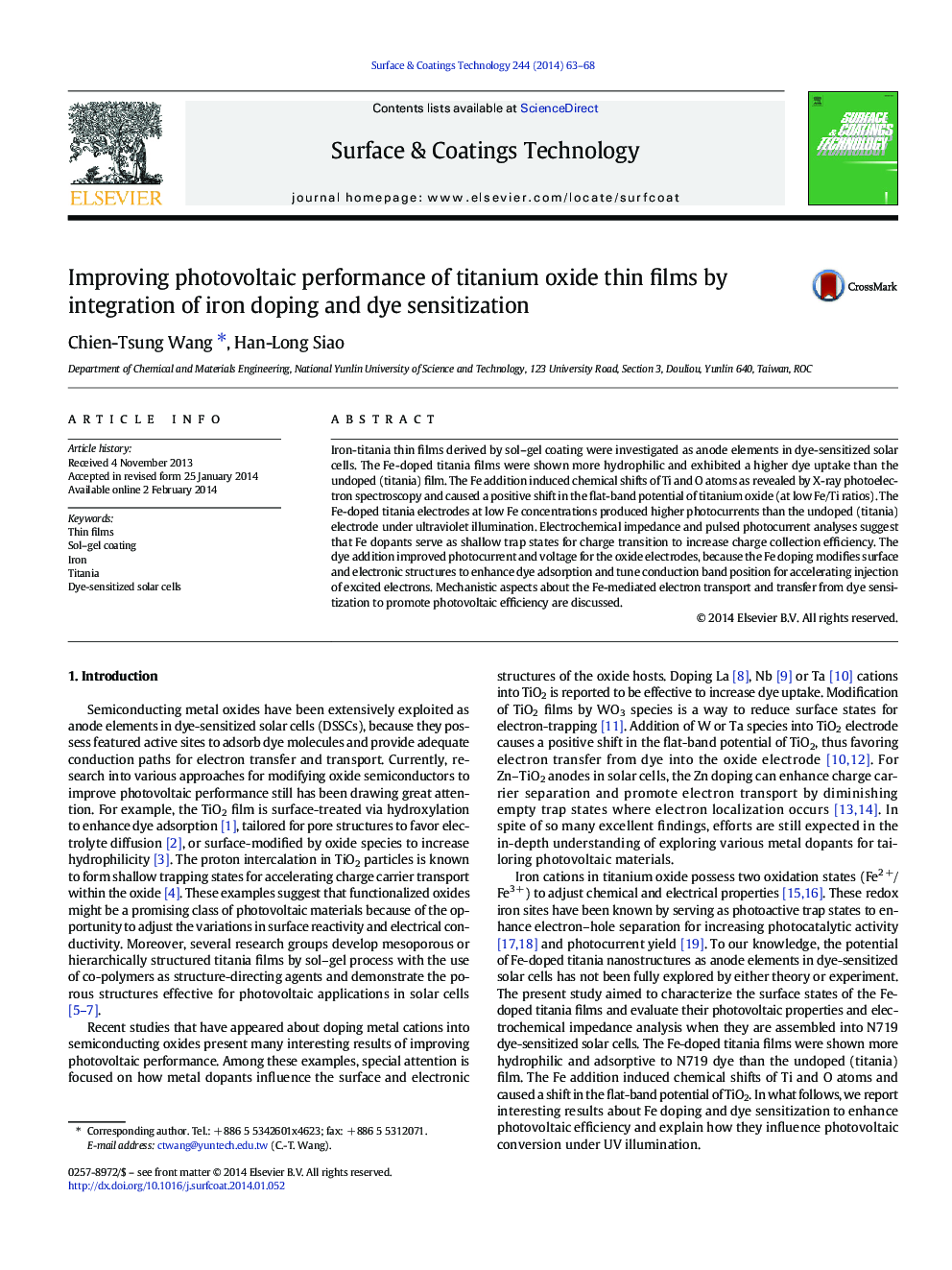| Article ID | Journal | Published Year | Pages | File Type |
|---|---|---|---|---|
| 8027995 | Surface and Coatings Technology | 2014 | 6 Pages |
Abstract
Iron-titania thin films derived by sol-gel coating were investigated as anode elements in dye-sensitized solar cells. The Fe-doped titania films were shown more hydrophilic and exhibited a higher dye uptake than the undoped (titania) film. The Fe addition induced chemical shifts of Ti and O atoms as revealed by X-ray photoelectron spectroscopy and caused a positive shift in the flat-band potential of titanium oxide (at low Fe/Ti ratios). The Fe-doped titania electrodes at low Fe concentrations produced higher photocurrents than the undoped (titania) electrode under ultraviolet illumination. Electrochemical impedance and pulsed photocurrent analyses suggest that Fe dopants serve as shallow trap states for charge transition to increase charge collection efficiency. The dye addition improved photocurrent and voltage for the oxide electrodes, because the Fe doping modifies surface and electronic structures to enhance dye adsorption and tune conduction band position for accelerating injection of excited electrons. Mechanistic aspects about the Fe-mediated electron transport and transfer from dye sensitization to promote photovoltaic efficiency are discussed.
Related Topics
Physical Sciences and Engineering
Materials Science
Nanotechnology
Authors
Chien-Tsung Wang, Han-Long Siao,
